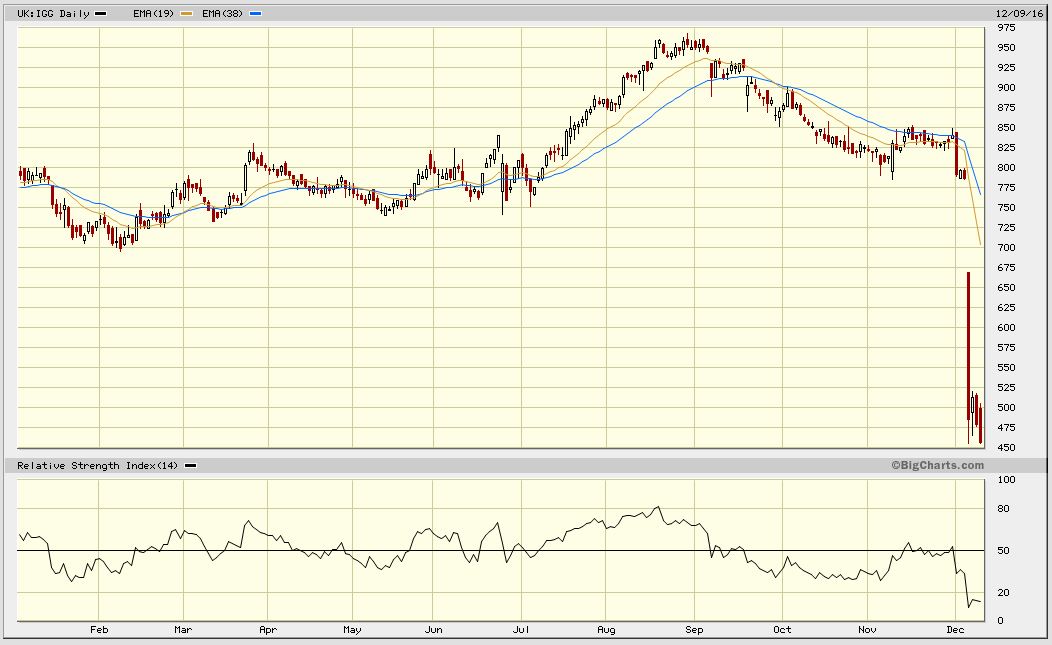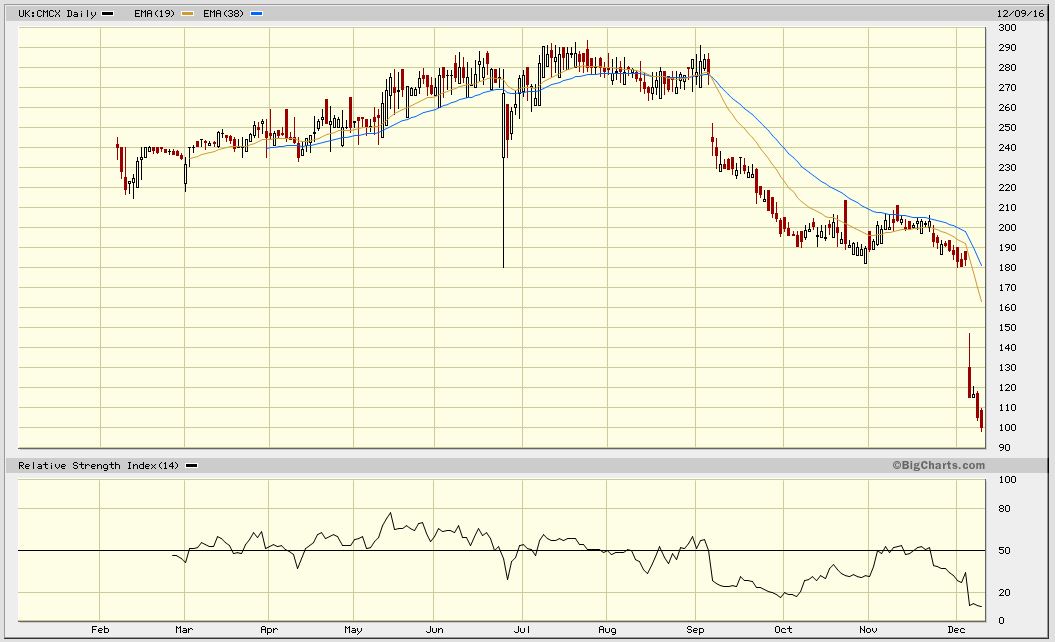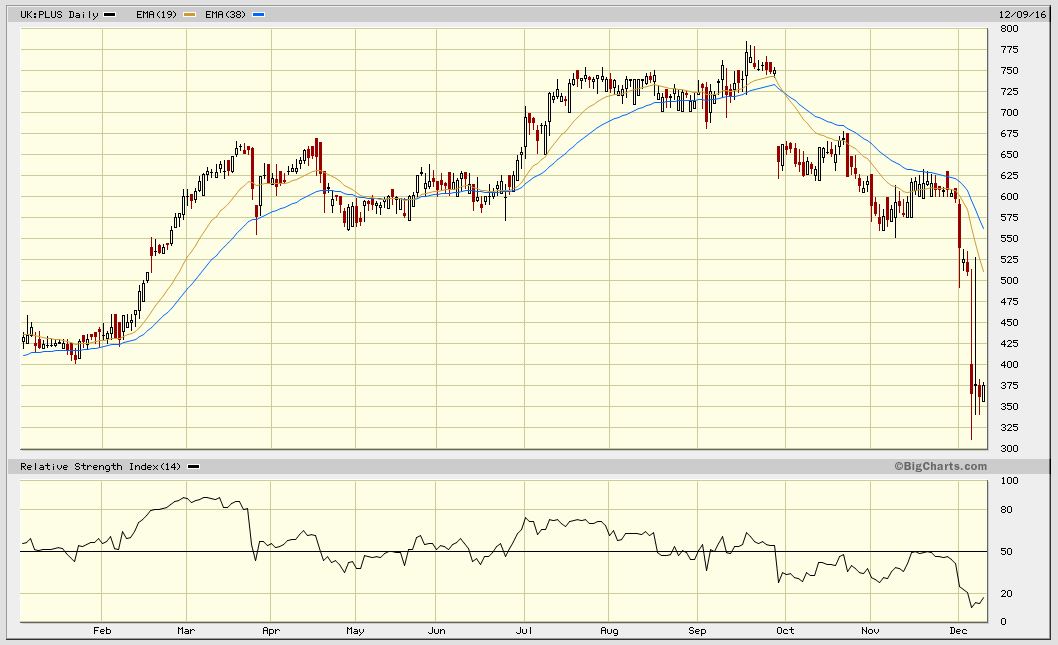Searching for value amongst the spreadbet companies post the FCA bombshell
By Richard Jennings, CFA

As someone who has been an active spread bettor for nearly 20 years now (and having lived to tell the tale!), indeed being the former founder of Spreadbet Magazine, the announcement of the FCA consultation paper looking into restricting leverage for retail punters and that hit the sector’s stock prices hard on the 6th December is particularly interesting to me.
In the first instance, I have to say that I was actually surprised to see that only 84% of traders are net losers over the lives of their accounts. I was always led to believe by industry insiders that over a 5 year period perhaps no more than 2-3% of account holders were net gainers – and most of these are very likely insider traders that got away with it. Shocking yes, but no more shocking than other gambling arenas such as horse racing, Vegas jaunts or indeed spending on the lotto in terms of odds being stacked against you! Bottom line is that the trading game is hard. Very, very hard.
The premise of spread betting and CFD trading is akin to going into your bank, asking for a loan of 100-200 times the size of your bank account and then wading into the financial markets pitting yourself against hedge fund managers, quants traders, PHD graduates, currency specialists, professional market makers, banks with billions at their disposal etc etc and expecting to win with next to no experience has always been a gargantuan illustration of human beings propensity of hope over reality!
I have been very vocal in numerous guises that the sheer leverage that punters were given by the spreadbet and CFD firms when married with the ingrained “loss aversion” that is hard-wired into all human beings can only ever end in the enrichment of the spreadbet firms and not the punter. That is plain and simple. Next time you are down the pub ask around if they know any millionaire professional spread betters!
The above being said, smoking kills, alcohol is known to cause many cancers, driving over the speed limit increases the chances of injury and death etc etc and yet this does not stop billions of people indulging in these practices… Human beings have an individual belief in their superiority and that they “can overcome the odds”. Faced with stats like the above re losing traders and that have been known about for years, I personally very, very much doubt that the FCA’s ultimate impositions of reduced leverage will result in punters no longer trying to “overcome the odds” and thus not spreadbet.
Question then is, after the falls, what is likely to be the net result on the industry in terms of profitability and, based upon the derived assumptions, is there value in any of the listed companies?
In the first instance, restricting leverage to a max of 50:1 for all “retail” clients (as opposed to those classed as “professional”) will affect the very vast majority of the spreadbet firms UK client bases. For those punters largely trading stocks, this will likely have minimal impact as margin rates are generally no more than 20:1 in any event at present. The big question is whether this 50:1 cap relates to ALL open positions or just an individual position. If the former, then a punter that trades a currency pair on a 50:1 leverage basis would potentially be restricted from trading any other instrument. The devil will be in the detail and at this stage it is pointless speculating on what this may be, save for pointing out that there is likely to be extensive lobbying by the firms to make the new rules practicable.
It is also an open secret that that the profitability, in the main, of spreadbet and CFD firms comes from clients trading indices and FX. Reduced leverage will affect profitability here of that I am certain, particularly for those punters with less than 12 months experience where leverage is capped at 25:1. In a 2 standard deviation event they may have a chance to hang on to a position (ie when the pound flash crashed in October) – it is these events that hand the spreadbet firms the windfall profits. Under the current regulatory regime they would be spat out double quick as 100-200:1 leverage gives you no exit.
The real effect of the ultimate new rules to me will be that it will not change the ultimate win/lose ratio for the reasons relayed at the beginning. What it will likely do however is extend the life of a punters account beyond the current average of 6 months. For those firms that are not largely dependent on “B” booking clients, (ie taking them on as principal) and that actually derive a good proportion of their profits from financing and spread charges, this could be a net benefit to them as the account life of a punter is extended. For those firms that are real “prop” houses and true B bookers then there likely will be a hit to short term P&L. Instead of “rinsing” an account in 6 months it will likely take longer and some punters, although I suspect an extreme few, will walk away with some equity as opposed to none.
The real area of the industry I see being affected is the binary players. Fortunately for the companies we look at below, this is a minute proportion of their profitability.
So, if we assume a lengthening of account life is the end result of the ultimately imposed new rules and a pushing out of the time period for the total profit collect from the firm’s clients, the most immediate way the industry could react to this is to cut marketing costs. That and consolidate. Indeed I suspect during 2017 we will see IG hoover up some smaller players (where its monopoly position allows) and perhaps CMC be acquired by GAIN or another financial markets player in order to consolidate marketing costs further.
Marketing (measured as CPA – cost per account) has always been the big margin eroder for the firms. Simple reason being that once you have an account, knowing that the overwhelming odds are that the punter will lose then the more accounts you have the more profit you make. This is also the simple reason why IG Index sits atop the industry in a seemingly unassailable position. Their balance sheet allows them to outspend all others.
Additionally, those firms with a good degree of non UK business will also likely fare better. This points to Plus 500 actually being a potential outperformer and we have already seen this in the days post the FCA announcement with company outperforming IG Index and CMC materially. Plus 500 relay that their UK revenues account for 20% of their revenues whilst IG’s is just under 50%. CMC reports UK revenue at 42% of total.
So, let’s take a look at some potential attractive entry points for the various companies:
IG INDEX
At the current stock price of 457p, the market capitalisation of the daddy of the industry is just under £1.7bn. The new rules will come into play likely later in 2017 and so the company’s current guidance for the next 6 months can be held good in my opinion. 2017 is slated to end up with net funds of just under £400m and so equivalent to just over £1 a share in net cash. If we assume a 20% revenue decline for the UK but which is partially offset by reduced marketing costs then we could be looking at an EPS fig of between 35 – 40p next year. At the current stock price the ex cash PE taking the mid figure would be just under 10 times. The Company would still likely throw off free cash flow of £130 – 140m and so the dividend is likely secure. If we assume a 33p per share divi payment we are already at a 7% yield and covered nearly 1.5 times with a lot of balance sheet flexibility.
Our stance is thus that any further weakness towards a 3 handle on the stock is likely to prove an exceptionally attractive entry point.

CMC Markets
The flotation earlier this year of CMC Markets was exceptionally fortuitous (or perhaps foresighted) by CEO and major shareholder Peter Cruddas. Selling shares at 240p and collecting a few hundred million pounds in cash illustrates just what a shrewd operator he is.
At Friday’s closing price of 100p resulting in a market cap of just under £300m – almost 60% lower than that paid by the institutions that ponied up in February’s IPO – we believe now illustrates good value per our reasoning below:
It is widely acknowledged that CMC’s platform is equal to, perhaps even better than IG’s. The involvement of Goldman Sachs with CMC – a veritable powerhouse of trading knowledge – some years ago when they took a 10% stake in the company really accelerated CMC’s position management and offering to clients. Indeed, it is my own preferred trading mechanism for non stock positions. I believe that their platform alone will make them attractive to either unquoted player Spreadex owned in part by Rich List member Peter Harris of Bourne Leisure fame or US listed GAIN. An acquisition by either would be a big pill to swallow as we value Spreadex based on the last years reported figures of PBT of £27m at around £300m. The Harris family could probably secure the financing line to make such an acquisition and Cruddas’ has indicated with the flotation that he is potentially looking to divest in full. As for GAIN – again, any further erosion in CMC’s market cap will, given GAIN’s acquisition of Galvan and City Index in recent years, likely put the firm on their radar. CMC’s position as number 1 CFD operator in Australia would also be attractive to both entities. IG of course, by virtue of monopoly restrictions, would not be an acquirer. If Plus 500 maintains its premium rating then I would also not count out the possibility of them looking at properly consolidating their position and silencing once and for all their detractors through being a potential acquirer of CMC.
The company’s recent interim results revealed net own cash of @ £40m – approx 15p per share. If we assume an EPS figure of 2017 of 12p per share then at the current stock price the shares trade on an ex cash PE of 7 times. The company’s stated policy is to pay out 50% of profits as dividends and so the prospective yield would be around 6%. With a rock solid balance sheet showing book value of £178m and next to nothing of that being intangibles the shares are already showing exceptional value on this bases at just 1.6 times book relative to IG & Plus which are trading at 2.5 and 6 times respectively. The company actually reports “own funds” at £165m but this includes a large (£109m) fig due from brokers and which is the hedge portion of their client book (itself last shown as £283m) and illustrates that they do not hedge more than 1/3 of client positions so are in fact a large “B” book player.
Any price weakness from here (100p) we view as an attractive accumulation level.

PLUS 500
Shares in Plus 500 divide the market it is fair to say. There are some that believe the stock to be a pack of cards that is ready to fall down and others, notably Crispin Odey (and who is presently experiencing his very own annus horribilis) that is a resolute fan of the company and has in fact used the recent sharp sell off to increase his firms position. Indeed, such a fan is he that Odey Asset Management owns in excess of 22% of the Company.
The company stated post the FCA announcement last week that they see a “material” impact on their UK operations. However with this accounting for only 20% of revenues and together with the additional RNS in response to the BaFin directive where they see no impact, even adjusting pro form 2017 EPS figs down to 50p per share the stock looks to be trading around just 7 times earnings. Divi yield prospective (ex another special payment) could be approaching double digits.
To conclude, we see CMC Markets around here as providing upside under almost all scenarios barring a real armageddon environment and believe them to be a potential takeover target. Further weakness to us is an exceptional buying opportunity in the stock. IG also offers material value, particularly down to a stock price starting with a 3. Plus 500 is an enigma. On a PE prospective basis they look cheap and of course they are not as exposed to the UK as the other two. For those investors preferring security and the “sensible trade” then IG and CMC are the picks. For those of a larger risk apetite (if not actually engaging in the practice spread betting!) Plus 500 make an interesting trade too.

What is for certain is that the sector will, like their underlying products, likely provide thrills and spills as we go into 2017 and the final FCA rule sets are imposed later that year.
CLEAR DISCLOSURE – The author, who is a Director of Align Research Ltd, holds an interest in the equity of IG Index, Plus 500 and CMC Markets and is bound to Align Research’s company dealing policy ensuring open and adequate disclosure. Full details can be found on our website here (“Legals”)
